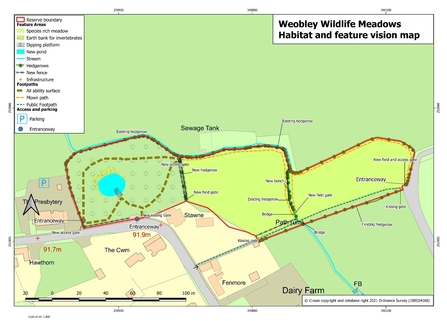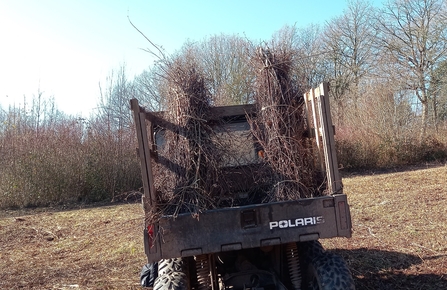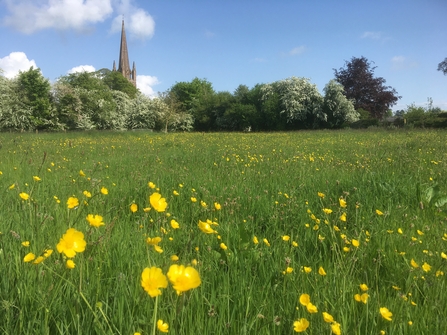Our volunteer warden Mike Williams reports that areas sown with yellow rattle and ox-eye daisies are coming into flower on the grassland, indicating that the meadows are becoming more species rich.
Wildlife and management update from Weobley Wildlife Meadows
Weobley Wildlife Meadows, Spring 2023 (c) Mike Williams

Plum blossom, Weobley Wildlife Meadows (c) Mike Williams
The orchard trees, in spite of a little bit of browsing from early grazing sheep, have, and continue to, put on a nice display which may mean there will be fruit to pick this autumn!
Meanwhile, our planning application for the new pond with dipping platform and habitat bank, and an all-ability footpath in the orchard and a kissing gate onto Kington Road, has now been approved by Herefordshire Council. To achieve this, we needed to demonstrate that the work to create the pond and path would not result in disturbance to European Protected Species. We also had to demonstrate how we would minimise any potential for sediment and run-off entering a nearby water-course (part of the River Lugg catchment), both while the excavation was ongoing and after, should the pond ever fill completely, after heavy rain for example.

Weobley Wildlife Meadows Map - our vision
One technique we will implement while the pond and landscaping work is being done, is to line the edge of the orchard, parallel with the stream, with tight bundles of brushwood (called fascines) that will slow the flow of surface water and trap any silt and sediment that might otherwise have been carried into the water course. The fascines were made by the coppice volunteers at Queenswood Country Park using birch and hazel brash and demonstrates a good use of the Queenswood coppice as a resource for our other nature reserves.

Fascines from Queenswood Coppice (c) Nic Howes
Although the pond creation here is intended to benefit wildlife, it is important for anyone considering a project like this, to obtain appropriate ecological and planning advice, as we did ourselves, so that the ongoing work and end-result follows best practice, complies with legislation and gives the best results for nature.

Weobley Wildlife Meadows, Spring 2023 (c) Mike Williams

